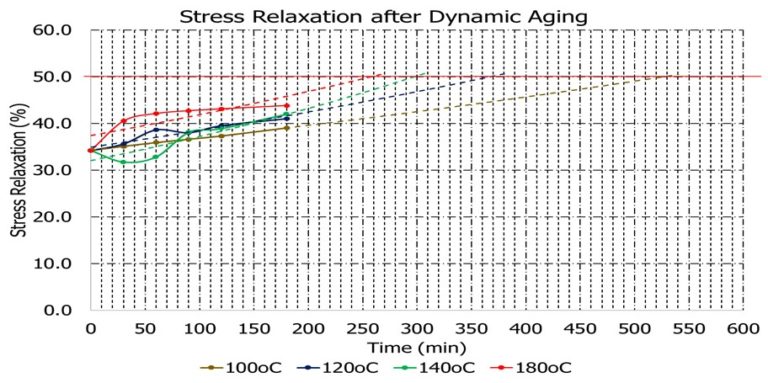
Service Life Prediction: How to Ensure Your O-rings Will Last

Author
Alpha Technologies
Rubber’s ability to withstand very large strains without permanent deformation or fracture makes it ideal for many applications including vibration isolators, seals and structural bearings, to name just a few. As a result, the concept of predicting the service life of a compound is of both practical and scientific interest. The service life of a rubber compound defines limits and sets parameters for engineering design.
Rubber compounds and their resulting products are sensitive to heat, moisture, light, fluids, and mechanical stress. These forces can cause changes in properties large enough to cause product failure. And because most rubber parts are intended to be in service for several years, this creates a conundrum. An engineer or the developing scientist cannot wait that long to evaluate the aging process under actual service conditions.
The three major engineering tasks in rubber product applications are to determine the Shelf Life, Service Life, and Remaining Useful Life (part already in use). Therefore, Service Life Prediction is clearly of great scientific interest and there is need for a comprehensive life prediction model. One of the main challenges in developing a service life model is selecting the parameters from the material and service environment.
The Life of an O-Ring
O-rings, for example, are one of the most common fluid power seals. O-rings are typically installed in a groove that’s machined or molded in one of the surfaces to be sealed. Their rubber-like properties let the devices compensate for dimensional variations in the mating parts. The O-ring prevents leakage until its rubber-like properties are retained and there is sufficient pressure between the shaft and mating surface. When a constant strain is applied to a rubber sample, the counterforce exerted by the test piece on the fixtures decreases with time, this behavior is called “stress relaxation”. O-ring is most often exposed to constant strain condition in which stress relaxation of rubber compound governs its service life.
To predict the service life of seal material rubber, such as an O-ring, scientists refer to ISO 11346 “Rubber, vulcanized or thermoplastic – Estimation of life-time and maximum temperature of use.” The WLF principle (Williams, Landel, Ferry) and Arrhenius concept are both described in this standard. It has been well documented that the temperature dependency of physical relaxation processes corelates well with the WLF equation. At the same time, thermal reactions due to elevated temperature results in crosslink modification and other degrading phenomenon conforms to the Arrhenius equation. Sound like a lot of work? Actually, it’s not if you’re conducting relaxation testing on Alpha’s Premier™ RPA.
Let's Crunch the Numbers
To demonstrate the usefulness of an RPA as a tool for predicting service life, we used a commercial EPDM based rubber compound to determine the life of the compound at 50oC. The failure criterion of the product was defined as the amount of time required for 50% stress relaxation. To perform the stress relaxation test the sample was cured in the Premier RPA’s biconical die at the documented product cure temperature and time.
Unaged sample stress relaxation test was carried out at test temperature of 70oC. Dynamic aging of the cured sample was carried out at aging temperatures of 100oC, 120oC, 140oC and 180oC. Aged samples stress relaxation test was carried out at the test temperature of 70oC.

Related Links
Webinar: FT Rheology via LAOS
Webinar: FT Rheology via LAOS (Large Amplitude Oscillatory Shear Learn...
Read MoreWebinar: The Future of Thermoset Testing
The Future of Thermoset Testing: A Look at the Latest...
Read More





